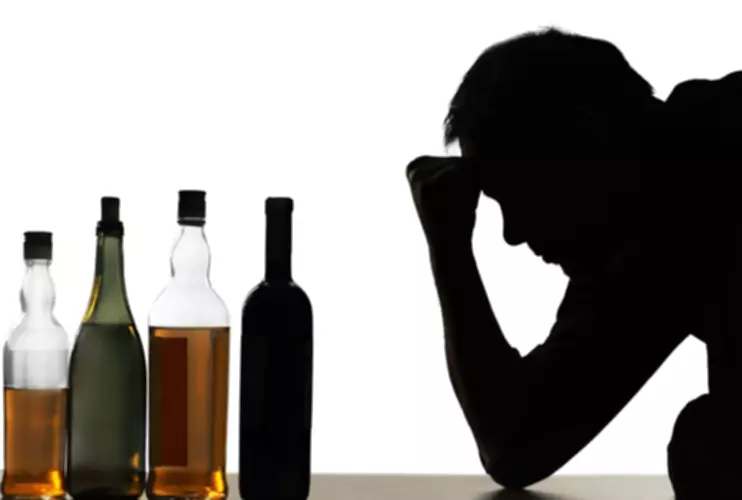If these signs are present, professional help from organizations such as the National Institute on Alcohol Abuse and Alcoholism is strongly recommended. Sometimes, their drinking falls into a pattern considered alcohol abuse. And sometimes, people who engage in alcohol abuse develop alcoholism. Unfortunately, this can lead to dangerous situations such as car accidents. If you ever find yourself involved in a car accident related to alcohol use, it may be beneficial to visit a car accident attorney. Alcohol use disorder (AUD), formerly known as alcoholism and alcohol addiction, describes a long-term pattern of alcohol use that becomes difficult to control.
Patterns of Drinking Associated with Alcohol Use Disorder:
Refer to the information above and compare your alcohol habits. After World War I, the Army and Veterans Administration broadened the nomenclature to include disorders affecting veterans. The more times people say “yes” to those questions, the more severe the condition. But agreeing to between two and three of them merits an AUD diagnosis. Alcoholics Anonymous is available almost everywhere and provides a place to openly and non-judgmentally discuss alcohol problems with others who have alcohol use disorder.
What are the symptoms of alcohol use disorder?
Treatment tends to have more benefit when you address unwanted patterns of drinking sooner rather than later. So, you don’t have to wait until alcohol use feels uncontrollable before reaching out for help. In some people, the initial reaction may feel like an increase in energy. But as you continue to drink, you become drowsy and have less control over your actions. If AUD is not treated, it can increase your risk for serious health problems. After completing treatment for AUD, it’s possible to have a risk of relapse.
Alcohol & Romantic Relationships: Reflections & Advice from Oar’s Ambassadors
According to the CDC, most people who drink too much are not alcohol-dependent, and 9 out of 10 adults engaging in alcohol abuse do not have alcohol dependence or alcoholism. In fact, experiencing alcohol withdrawal syndrome is one of the first signs of alcoholism for those who may not have previously seen their drinking habits as a problem. Someone with an alcohol abuse problem may not experience withdrawal symptoms. Typically, alcohol withdrawal symptoms happen for heavier drinkers. Alcohol withdrawal can begin within hours of ending a drinking session.
- AUD refers to what is colloquially known as alcoholism, which is a term that the DSM-5 no longer uses.
- Alcoholism, a chronic disease characterized by a loss of control over drinking and changes in brain regions, necessitates comprehensive treatment approaches.
- The term “Alcoholic” is often used in regards to the Alcoholics Anonymous program.
- Moreover, alcohol weakens the immune system over time, making the body more susceptible to infections and impairing its ability to fight illnesses.
RehabCenter.net is intended for educational purposes only and is not designed to provide medical advice of any kind. Any information found on RehabCenter.net should never be used to diagnose a disease or health problem, and in no way replaces or substitutes professional care. In the case of a suspected health problem, please contact your healthcare provider.
These changes can contribute to increased alcohol craving and intake, escalating to risky drinking behaviors. AUD affects a significant portion of the population, with millions of adults and adolescents experiencing its detrimental effects. The symptoms of alcohol abuse range from a craving for alcohol to a failure to fulfill major role obligations at work, school, or home. The effects on health can be extensive, including liver disease, cardiovascular problems, and neurological damage, among others.
Alcohol abuse, also called problem drinking, occurs when drinking alcohol becomes an issue that creates negative consequences for a person. While cirrhosis scars from excessive drinking are irreversible, quitting alcohol and leading a healthier lifestyle can help your liver heal from alcohol-related liver disease. Alcohol detox isn’t easy and not everyone can do it on their own. That is why alcohol detox and alcohol withdrawal treatment is administered by medical professionals. With more than 15,000 treatment centers in the United States alone, there are a variety of options for those living with alcoholism, from alcohol detox to online rehabs and teletherapy.
When someone abuses illicit or prescription drugs, they will experience side effects. Millions of people in the United States struggle with substance abuse or addiction. Addiction treatment programs use a variety of therapies to provide clients with a whole-person approach to recovery.
According to information from the National Institutes of Health, these discomforts usually peak 24 to 72 hours after your last drink, but they may last for weeks. If you think you’re struggling with an alcohol use disorder and want professional help, call The Recovery Village. Our helpful representatives drug addiction substance use disorder diagnosis and treatment can discuss your situation with you, explain your treatment options, and get you started on the path to lifelong recovery. “Alcoholism” is a term often used to describe someone with a severe form of alcohol dependence. Many times people use it to refer to someone who simply drinks too much.
Alcoholics Anonymous and other support groups bring together people with AUD in a safe space. Learn about what has (and hasn’t) worked for others and lean on them for help when times get tough. Keep in mind, too, that AUD can have effects that extend beyond your physical health. If you or a loved one show signs of overdose, contact your local emergency services immediately. Alcohol poisoning can get dangerous quickly, and it’s sometimes fatal.
Drinking to excess but not being physically dependent is called alcohol abuse. Misusing alcohol in one instance may not lead to dandruff symptoms and causes an alcohol use disorder. However, continuing to abuse alcohol over a period of time will likely lead to an alcohol problem.
Psychosocial treatments, such as cognitive-behavioral therapy (CBT), are widely used and focus on altering drinking behavior through skill development and coping strategies. Research indicates CBT’s efficacy, especially when combined with other treatments like motivational interviewing (MI) or contingency management (CM). However, despite its effectiveness, a substantial number of individuals may return to heavy drinking post-treatment. Medications approved by the US Food and Drug Administration, such as naltrexone, acamprosate, and disulfiram, can assist individuals in reducing or stopping alcohol consumption and preventing relapse.
Research underscores the importance of comprehensive treatment approaches to support individuals in overcoming alcoholism and restoring their health. People with alcoholism can develop withdrawal symptoms, including seizures. Diagnosis is based on a conversation with your healthcare provider. The diagnosis is the ultimate guide to microdosing psychedelics made when drinking interferes with your life or affects your health. Alcoholism increases the likelihood that a person’s health, mind, and well-being will be affected negatively. The negative consequences of alcohol abuse become grimmer in the presence of other substance use disorders or illicit substances.…

